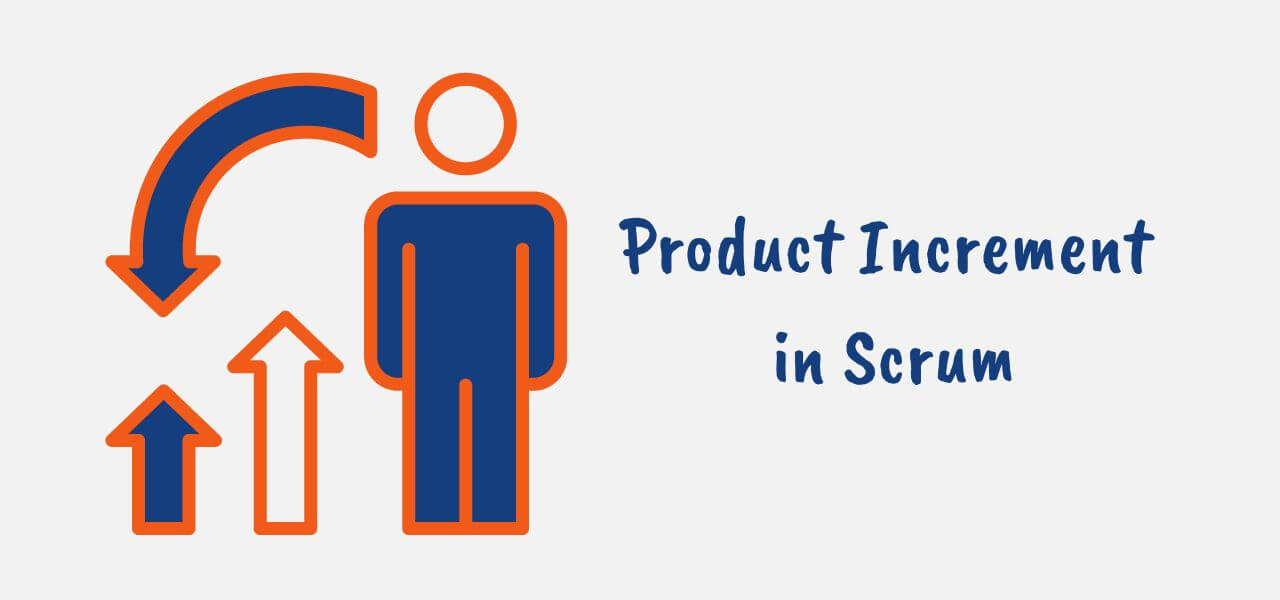Scrum is an Agile framework for managing project work, with an emphasis on software development. It’s also one of the most popular of the Agile methodologies.
Scrum develops solutions through iterative and incremental product development by decomposing the product requirements and delivering them in time-boxed iterations called sprints.
The outcome of each sprint is a Scrum Product Increment, with the sum of these increments equaling the final product.
This Product Increment is the heart of Scrum, representing the value delivered to the customer and the progress made toward a vision.
What is Scrum Product Increment?
The Scrum Product Increment is the sum of all the Product Backlog items completed during a Scrum sprint and the value of the increments of all previous sprints.
It must be in usable condition regardless of whether the Product Owner decides to release it and must meet the team’s Definition of Done, which means it has to be fully tested, integrated, and documented.
The increment represents the progress made toward a product vision or goal. It allows the Scrum team and stakeholders to inspect and adapt the product as required to optimize value.
The Product Increment is the most important metric in Scrum for assessing progress. If done well, it can enable continuous value delivery to customers.
Building the Right Product Increment in Scrum
To build the right Product Increment in Scrum, the Product Owner and team must collaborate to define a Product Goal and shape the Product Backlog to achieve that goal.
The team then chooses which Product Backlog Items they can commit to delivering during the next Sprint.
It is critical that items are decomposed to a level that can be done within a sprint. The team forecasts how they will build the increment during Sprint Planning.
During the Sprint, the team does the necessary work to convert the selected Product Backlog items into a usable increment.
If something turns out to be too big to complete, the team can work with the Product Owner to remove or split the item.
The Sprint Goal provides guidance for the team to make scope adjustments while still achieving the overall objective.
At the Sprint Review, the team presents the increment to the Product Owner and stakeholders.
This inspection and adaptation of the product by reviewing the actual increment is a fundamental part of Scrum. The insights gained can influence future sprints.
The Importance of the Definition of Done
A critical aspect of the Scrum Product Increment is the Definition of Done (DoD). The definition of Done is a shared understanding among the Scrum team members of what it means for work to be complete.
This definition is crucial because it ensures consistency and quality across the product. It may vary from team to team but often includes criteria such as:
- Code is written, tested, and integrated
- Documentation is updated
- User feedback is incorporated
- Performance and security requirements are met

Sprint Review: Inspecting the Product Increment
The Sprint Review is a critical event in the Scrum framework, where the team inspects the Product Increment and adapts the Product Backlog accordingly.
During the review, the development team demonstrates the work completed during the sprint, and the Product Owner checks if the increment meets the Definition of Done.
The Sprint Review provides an opportunity for feedback from stakeholders and users, which can help the team make informed decisions about future work and priorities.
Re-Planning Based on the Increment
If the increments are not adding sufficient value or moving closer to the product vision fast enough, the Product Owner and team need to re-plan their approach.
This can be done in the Sprint Retrospective and the next Sprint Planning meeting. In the Retrospective, the team discusses how to improve its approach to building increments, with a focus on value delivery and optimization.
The Product Owner shares insights on how useful the recent increments were, and what needs to improve. Together they come up with a revised plan or strategy.
In the next Sprint Planning, the Scrum team chooses Product Backlog items for the new sprint based on the conclusions from the Retrospective.
The selected items and revised Sprint Goal aim to optimize the value of the increment. It may take a few sprints to get on an improved track.
The Scrum team and Product Owner must continue inspecting increments and adapting as needed to build the right product.
Releasing the Product Increment
While incrementally building a product, the Product Owner decides if the latest increment should be released to users or customers.
Not every increment may provide enough new value or functionality to warrant a release. The Product Owner compares the increment to the Release Definition of Done and evaluates if it fulfills release criteria.
If the increment is releasable, the Product Owner collaborates with relevant stakeholders to schedule and plan the release.
The team provides any necessary technical support for the release process. Releasing increments is the best way to gain actionable feedback from real users to further improve the product.
Continuous Improvement of the Product
In Scrum, the product is continuously improved and optimized over time based on learnings from many Sprints of development.
By frequently inspecting actual increments, the Scrum team and Product Owner gain valuable insights. They adapt their strategies and plans to build better increments that move closer to the product vision or goal.
Scrum’s iterative approach, with constant feedback and retrospection, enables continuous value optimization of the product.
When the product vision or market conditions change significantly, the Product Owner can introduce new goals and reshape the Product Backlog to address the updated needs.
The Scrum team then builds new increments based on the revised Product Backlog.
What is the Role of the Product Owner in Releasing the Product Increment?
The Product Owner plays a key role in determining if and when to release a product increment. Some of the Product Owner’s responsibilities around releasing increments include:
1. Defining the Release Definition of Done
The Release DoD establishes criteria for when an increment is ready to be released. The Product Owner defines release criteria based on needs and value to users and the business.
2. Deciding if an Increment is Releasable
The Product Owner evaluates if the latest increment meets the Release DoD and provides enough new functionality or value to warrant releasing it to users. Not every increment may be releasable.
3. Planning the Release
If an increment is releasable, the Product Owner collaborates with stakeholders to schedule and coordinate the release. This includes developing a release plan, assigning responsibilities, and setting a release date.
4. Announcing the Release
The Product Owner often communicates with users and customers to announce an upcoming release and highlight new features or product updates being delivered.
5. Gathering Feedback
After releasing an increment, the Product Owner monitors how it is received by users and gathers feedback and metrics to help determine how to optimize future releases. Feedback is also shared with the development team.
6. Updating the Product Backlog
Based on feedback and learnings from a release, the Product Owner may update requirements, add or remove items, and re-prioritize the Product Backlog to incorporate needs identified from the latest increment.
7. Promoting Adoption
The Product Owner works to encourage the adoption and productive use of new functionality released in an increment. This may involve activities like user training, creating tutorials, FAQs, or other documentation.
Managing Technical Debt
Technical debt is the accumulation of suboptimal design or implementation decisions that can hinder the long-term effectiveness of a software product.
A focus on delivering a potentially shippable product increment in each sprint can help teams manage and reduce technical debt.
By addressing technical debt iteratively and incrementally, Scrum teams can maintain a high-quality product while adapting to changing needs and priorities.
Continuous Integration and Delivery
Continuous integration (CI) and continuous delivery (CD) are practices that can complement the Scrum product increment process.
CI involves integrating code changes frequently and automatically testing them to detect and fix issues early. CD extends this by automating the delivery of tested code to production environments.
Implementing CI/CD practices within a Scrum framework can help teams:
- Improve the feedback loop
- Increase the frequency of product increments
- Reduce the risk of deployment issues
Product Increment Best Practices
To ensure successful product increments in your Scrum projects, consider the following best practices:
- Establish a clear definition of Done: Collaborate with the entire Scrum team to create a shared understanding of what it means for work to be complete.
- Prioritize backlog items: Work closely with the Product Owner to prioritize the product backlog, focusing on delivering value to users and stakeholders.
- Focus on quality: Encourage the development team to maintain high-quality standards throughout the development process, addressing technical debt, and following best practices.
- Communicate and collaborate: Foster open communication among team members and stakeholders, allowing for feedback and adaptation throughout the Sprint.
- Embrace continuous improvement: Regularly review and adjust your Scrum practices to improve the team’s effectiveness and the quality of the product increments.
Challenges when Building Product Increments in Scrum
Here are some common challenges Scrum teams face when building Product Increments:
1. Lack of Clarity in Product Vision and Roadmap
If the Product Owner has not clearly articulated the long-term vision and roadmap for the product, the team may struggle to determine what to include in each increment.
This can lead to unfinished work or increments that lack cohesion.
2. Incomplete or Low-quality Increments
Teams may have trouble completing all the stories they committed to in a sprint. This results in unfinished work bleeding into the next sprint and increments that lack quality.
The team needs to improve its sprint planning and commitment to the “Done” criteria.
3. Delayed Feedback
If the team does not frequently review and release the increment, they may go for several sprints building features that do not meet user needs.
The team should aim for getting incremental feedback from users and stakeholders to avoid major course corrections.
4. Changing Priorities
Product Owners may frequently change priorities or add new requirements, making it difficult for the team to complete coherent increments.
The Product Owner needs to lock in priorities for the duration of the sprint, trusting the product vision and roadmap. Changes can be discussed for the next sprint planning.
5. Uncommitted Team
Team members may lack commitment to the Sprint Goals and “Done” criteria, leading to uneven increments that aren’t potentially releasable.
The Scrum Master needs to facilitate discussions to gain consensus and buy-in from the team on the work for the sprint.
6. Technical Debt
If teams do not invest time paying off technical debt accrued while building new features, it will slow them down in the long run.
Teams should allocate part of each sprint to addressing any technical debt to keep the product architecture clean and support frequent product increments.
7. Cross-functional Challenges
In a complex product, teams may depend on other teams to complete features in an increment. Without close collaboration, work may remain unfinished by the end of the sprint.
Teams should improve their cross-functional relationships and integrate better with dependent teams.
Conclusion
In conclusion, the Scrum Product Increment is a vital component of the Agile development process.
It represents a potentially releasable version of the product that has been iteratively and incrementally developed by the Scrum team.
By understanding the importance of the Product Increment, the Definition of Done, and incorporating related best practices, teams can deliver high-quality products that continuously adapt to changing requirements and user needs.





